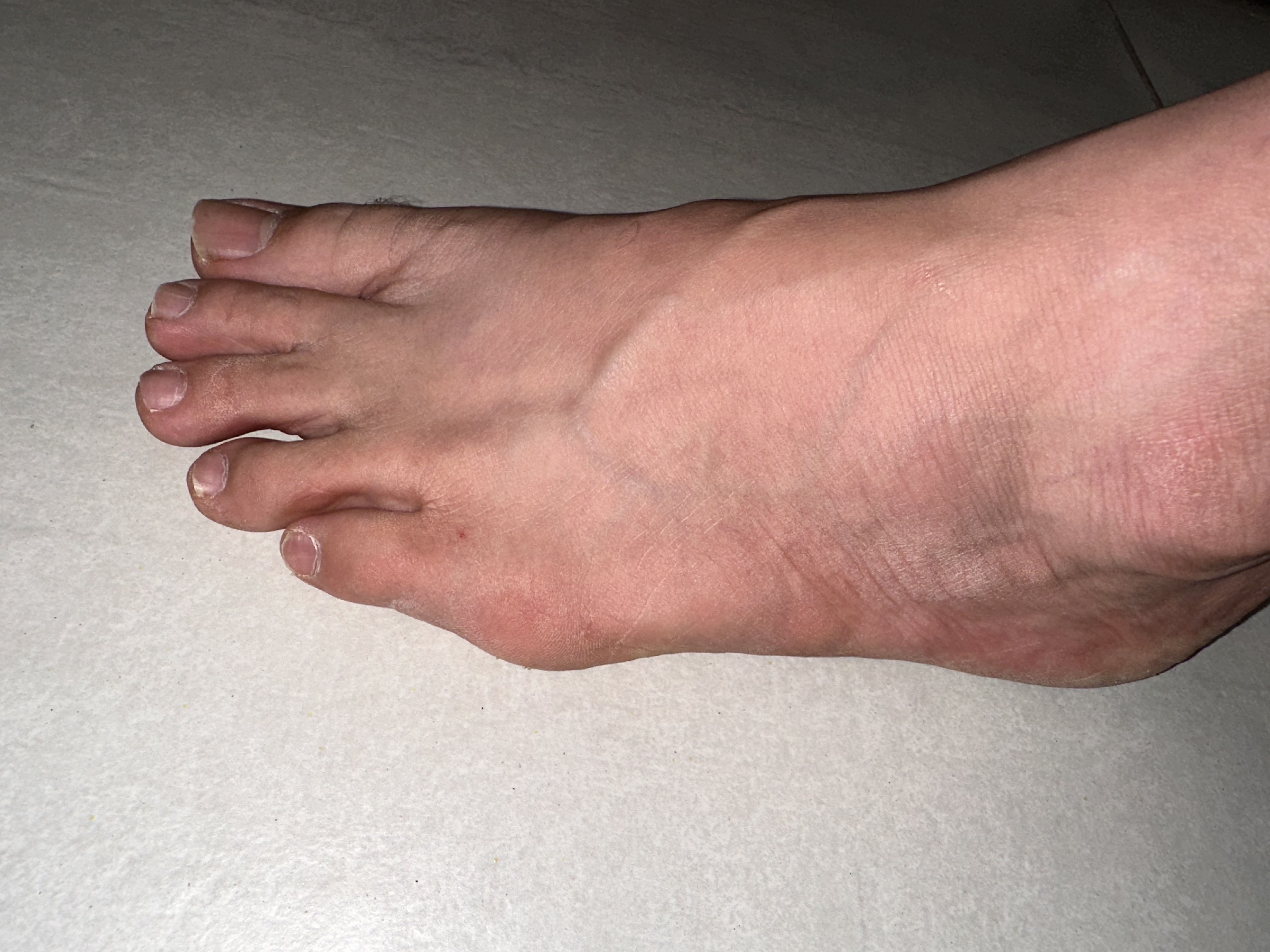Why Did My Pinky Toe Turn Sideways?
Understanding why it happens, what it means, and how to fix it



Understanding why it happens, what it means, and how to fix it



It often starts gradually... you notice that your small toe is beginning to angle inward toward the others. Over time, it may start rubbing against your shoe, forming a callus, or feeling uncomfortable when you walk. Many patients refer to this as their “pinky toe turning sideways” or "curling inwards" and it’s more common than you might think. This condition is clinically referred to as an Adductovarus Toe.
A sideways or rotated little toe isn’t just a cosmetic concern. It can indicate underlying changes in foot structure, muscle balance, or pressure patterns that deserve attention before they worsen. At Signature Foot & Ankle, our specialists evaluate these subtle changes every day and help patients restore comfort, alignment, and confidence in their stride.
Shoes with a narrow or pointed toe box can gradually crowd the toes, forcing the pinky toe to rotate or angle inward. Continuous pressure and friction lead to soft-tissue tightening and joint deviation over time.
Certain foot types are more prone to this issue. High arches, flat feet, or genetic predispositions can alter the balance of tendons and ligaments, allowing the little toe to drift out of alignment.
When the tendons that stabilize the little toe become weak or imbalanced, the toe can rotate into an inward and downward curled position, resulting in the "adductovarus" posture. Prior injuries or repetitive strain can accelerate this process.
Even without trauma, years of pressure from standing, walking, or wearing unsupportive footwear can gradually cause the toe to change position. Left untreated, the joint may eventually stiffen in its rotated posture.
While a crooked pinky toe may seem minor, it can lead to:
Early evaluation allows for conservative treatment before surgery is ever needed.
Step 1: Shoe and Padding Adjustments
Step 2: Supportive Devices and Exercises
Step 3: Professional Evaluation
Schedule an appointment if:
At Signature Foot & Ankle, we use diagnostic imaging and gait analysis to determine whether the problem stems from soft-tissue imbalance, bony alignment, or both.
Step 4: Surgical Options
If conservative treatments are not sufficient, or if the toe has become stiff and fixed in position, surgery may be recommended to realign the toe and restore comfort. These options are tailored to each patient’s anatomy and activity level.
A sideways or “turned” pinky toe is a common but often progressive condition. The sooner it’s evaluated, the easier it is to correct. If your little toe has started shifting, rubbing, or causing discomfort, our team can help you determine the cause and choose the best treatment plan. Whether that’s a simple shoe change or a surgical correction, we're here to help!
If your pinky toe has started drifting or rubbing, don’t wait for it to get worse. Our board-certified foot and ankle surgeons specialize in identifying the underlying cause and providing both conservative and advanced treatment options to keep you walking comfortably.
Call us today: 561-203-9285 or Schedule Online Now!